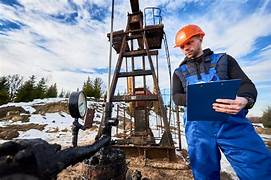About the course: The role of the Well Control
Training Program in developing safe oil drilling operations from the
perspective of onshore and offshore drilling crews, this training course will
address subjects beyond the understanding achieved from Well Control
accreditation courses.
The course has been developed to provide participants with a
deeper and wider knowledge of Well Control challenges. The lessons and
understanding obtained will help avoid the problems faced in Well Control in
the first place.
This 3 Weeks comprehensive course will address planning and
implementation of operational procedures in Well Control. In the event that a
Well Control incident occurs, participants will be equipped with down-hole
awareness of the behaviour of influxes and how to manage pressures in the
wellbore to avoid escalation of the event.
The course covers both basic well control modules, such as
the source of pressures, kick detection methods and the various methods for
“killing” vertical and deviated wells with the bit on bottom; and some advanced
techniques required to effectively manage more complex well kicks, including
kicks that occur in horizontal or highly deviated wells, kicks in oil muds
where gas solubility can be a concern, and control methods for kicks taken with
the bit off bottom, including volumetric well control, volumetric stripping and
bull heading.
Learning Objective:
- Analyze
the statistics of the occurrences and reasons for blowouts
- Understand
the root causes of blowouts
- Avoid
well control conditions that lead to blowouts
- Plan to
avoid well kicks and blowouts
- Manage
well control operations
- Interpret
and manage pressure in the well
- Select
and understand well control methods to address various kick scenarios
Prerequisites: Participants will need to have a solid
foundation within well engineering principles, well design, equipment, and
operational procedures at a senior level.
Duration: 15+ hours
Topic to be covered:
·
Basic Well control Fundamental-Volume
- Basic Area
- Volume Annular
- Internal & Annular Capacity
- Pump Output
- Annular Velocity
- Tripping Dry & Wet
- Slug Calculation
·
Basic well control Fundamental-Pressure
- Importance of Pressure
- Hydrostatic Pressure
- U-tube concept
- Bottom Hole Pressure (BHP),
- Equivalent Circulating Density (ECD)
- Leak Of Test (LOT)
- MAASP
·
Well Shut-In
- Causes of Kicks
- Early Kick Warning
- Positive Kick Sign
- Well Shut-In Line Up and Procedure
- Recording Shut in Drill Pipe & Casing
pressure
- Kill Mud Wt. Calculation
- Formation Pressure Calculation
- Height of Influx and gradient of Influx
Calculation
- Gas Migration Behaviour Open and Close
- Trip and Riser Margin
- Slow Circulation Rate (SCR)
- Choke Line Friction Losses (CLFL)
·
Well control Methods and Problem
- Objective and Methods
- Drillers Method
- Wait & Weight (W&W) Method
- Drillers vs W&W Method Comparisons, Casing
Pressure &
- Casing Shoe Pressure, Advantages and
Disadvantages
- Kick Influx Behaviour
- Stripping and Volumetric Method
- well control Operational Problems
·
Kill Sheet Exercise
- Filled and Gauge Kill sheet golden rules with
examples
·
Shallow Hazards
- Shallow Gas
- Hydrates
- Procedure/Equipment/Planning Shallow hazard
- Deepwater vs Onshore Shallow Hazard
- Barrier
- Significance primary/secondary/tertiary barrier
policy
- Drilling & Completion Operational Phase
exercise
·
Well control Equipment
·
Well control Simulator
·
Well control API Std
·
Surface Equipment
- Diverter System
- Annular Preventor
- Rams Preventors
- Drilling & Riser Spool
- Choke Manifold
- Gas Separator
- Hydraulic Control System
- Drill string well control Equipment
·
Subsea
- Subsea Challenges
- Subsea BOP Control System
- Tertiary well control -Blowout Containment
- Procedure, Planning
- Equipment
·
Unconventional well control Procedure with Case
- Stripping, Snubbing
- Volumetric
- Bull heading


